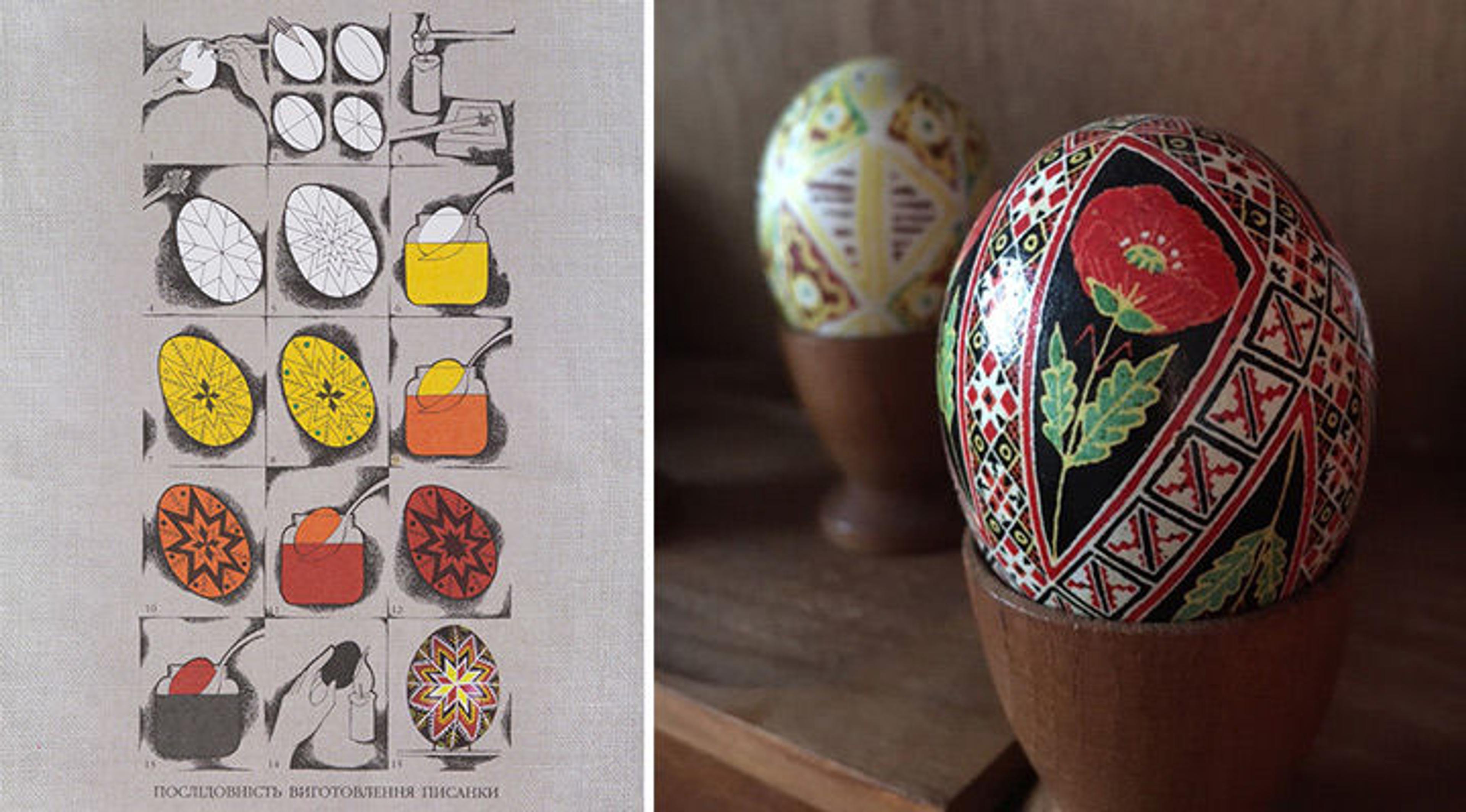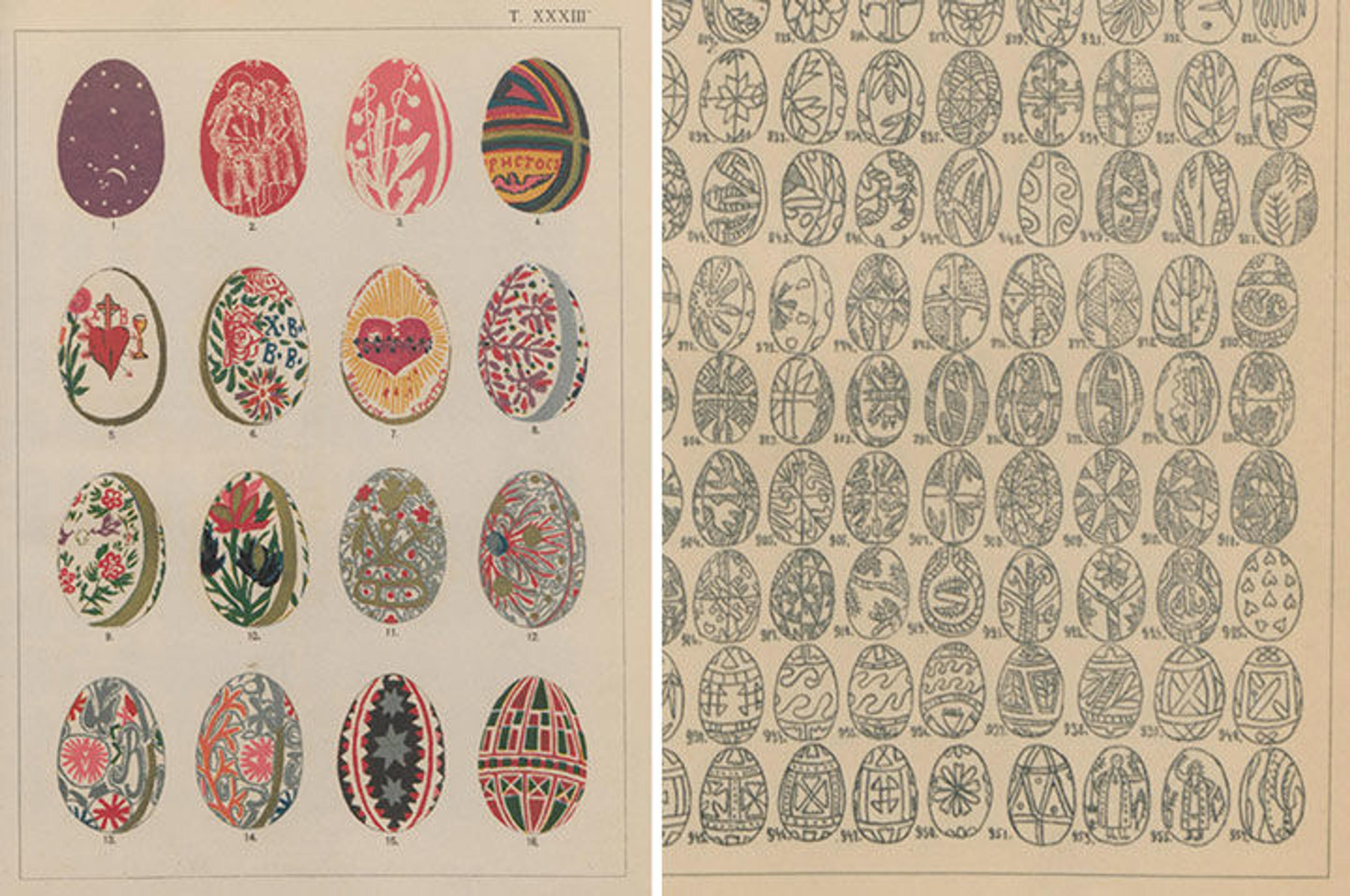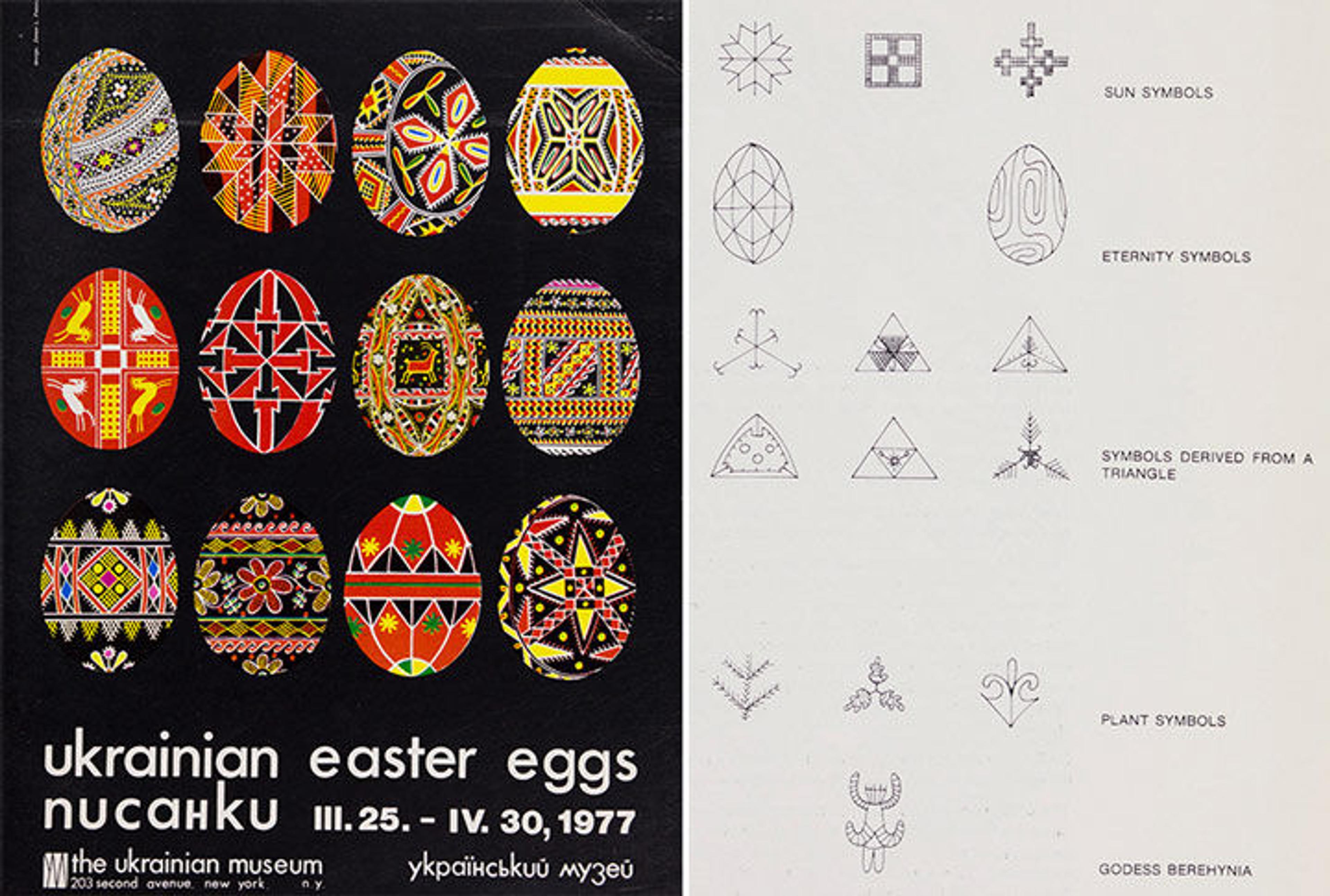Pysanky: Dyeing to Celebrate Easter

Left: The pysanky-making process, illustrated on the back endpaper of Ukraïns'ka narodna pysanka, 2005. Right: Pysanka given to the author's grandparents by Wasyl Gina of New Haven, Connecticut
«My dad's grandparents came to America in the early 1900s and settled among other Ukrainians in and around New Haven, Connecticut. Like any other immigrant community, they brought with them the culture and traditions of their homeland. For Ukrainians, the Easter season means that it's time for skillfully decorated eggs—called pysanky—which are created with a wax-resist technique and dyes and feature traditional folk patterns.»
As illustrated above, the pysanky maker (pysankarka) draws the design on the egg with melted beeswax, which is applied in stages with a small metal funnel on a stick (kistka). First, any white to be retained in the finished design is drawn, and the egg is dipped in a light-color dye. At each stage, the most recently dyed color is preserved appropriately by covering it with wax, and the egg is then dipped in progressively darker shades of dye until all colors have been added. Finally, the accumulated wax is melted and wiped off, revealing the finished design.
The elaborate and beautiful pysanka with the poppy (above right) was given to my grandparents by Mr. Wasyl Gina, a friend of theirs in the congregation of New Haven's St. Michael's Ukrainian Catholic Church. My father remembers Mr. Gina well, even though the last time he saw him was probably around 1960!

Left: Two of the author's grandfather's pysanky. Right: Pysanky from Chernivtsi Oblast, from Ukraïns'ka narodna pysanka, 2005
The designs can be simple or elaborate, incorporating abstract and geometric patterns or representational imagery, but all are symbolic of religious or cultural themes. Color choices are symbolic as well, and pysanky may be single- or multicolored. At holiday times there was always a bowl of them out on display in my grandparents' house. In fact, my grandfather tried his hand at them, too, and those are two of his creations shown above.
I was pleased to find that Watson Library has several interesting books on pysanky in its collection. Above right is a page illustrating examples from Chernivtsi Oblast, a western Ukrainian region bordering Moldova and Romania. This 2005 Ukrainian publication describes the history and symbolism of pysanky, and 38 full-color plates that are organized by region, such as the one above, display hundreds of examples from across the country.

Plates 33 (left) and 38 (detail, right) from Opisanīe kollektsii narodnykh pisanok, 1899
Perhaps none of our books on this subject is better than Opisanīe kollektsii narodnykh pisanok. This 1898 publication details the over 2,100 pysanky given to the Lubenskīĭ muzeĭ E.N. Skarzhinskoĭ (known as the Museum of Ukrainian Antiquities of Lubni upon its founding, in 1874). This oversize volume presents the museum's collection as of January 1898, and provides background on assembling the collection. Thirty-three chromolithograph plates—one including silver ink (plate 33, above left)—provide over 500 color examples from the collection.
Plates 34 through 45 show line diagrams of hundreds of pysanky. In addition to texts on the religious aspects of the egg and the materials and methods of production, there is an extensive bibliography. The collection is classified by stylistic similarities, and a brief description of each of the 2,123 designs is included.

Cover (left) and page seven (detail, right), from Pysanka, the Ukrainian Easter Egg and Ritual Bread Exhibition, March 25–April 30, 1977
Here in New York City there is a vibrant Ukrainian community, and the Ukrainian Museum in the East Village has been part of it since its founding, in 1976. The museum has a large collection of pysanky, as one would expect, and Watson Library owns an exhibition catalogue from the very early days of the museum for a show on pysanky and ritual bread. Helpfully, some of the symbols seen within pysanky designs are diagrammed in the catalogue (above right).
It's been fun looking at the Watson Library collection—and at these beautiful publications and pysanky designs—through the lens of a piece of my family's history. Many thanks to Jared Ash (Assistant Museum Librarian, Slavic and Special Collections) for his help with reading and translating important parts of these works.
Dan Lipcan
Dan Lipcan is an associate Museum librarian in the Thomas J. Watson Library.